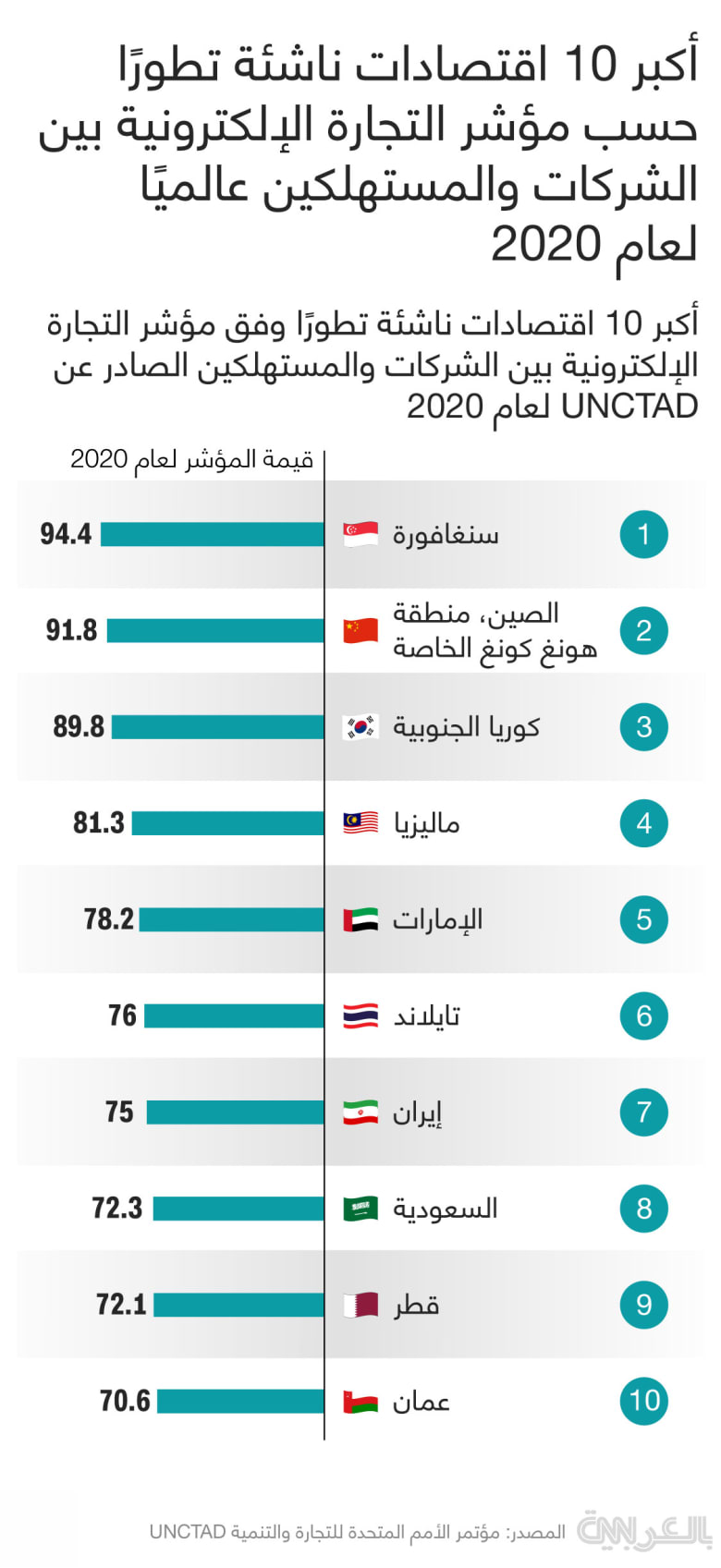دبي، الإمارات العربية المتحدة (CNN)-- وفقًا لمؤشر التجارة الإلكترونية بين الشركات والمستهلكين، تتصدر سويسرا لأول مرة مؤشر التجارة الإلكترونية (B2C) الصادر عن مؤتمر الأمم المتحدة للتجارة والتنمية (الأونكتاد) لعام 2020، قبل هولندا مباشرة. في عام 2019، استخدم 97٪ من سكان سويسرا الإنترنت.
يصنف المؤشر 152 دولة من حيث استعدادها للتسوق عبر الإنترنت بقيمة تقدر بنحو 4.4 تريليون دولار على مستوى العالم في 2018، بزيادة 7٪ عن العام السابق. يتم تصنيف البلدان حسب الوصول إلى خوادم الإنترنت الآمنة، وموثوقية الخدمات البريدية والبنية التحتية، وشريحة سكانها الذين يستخدمون الإنترنت ولديهم حساب مع مؤسسة مالية أو مزود لخدمات الأموال عبر الهاتف المحمول خدمات.
وتحتل الصين والولايات المتحدة أكبر سوقين للتجارة الإلكترونية بين الشركات والمستهلكين، في المرتبتين الـ 55 والـ 12 على التوالي في المؤشر. على الرغم من أن كلا البلدين يتقدمان في العديد من المقاييس المطلقة، إلا أنهما يتأخران في المقارنات النسبية.
على سبيل المثال، يعد انتشار الإنترنت في الولايات المتحدة أقل من أي من الاقتصادات في العشرة الأوائل، بينما تحتل الصين المرتبة 87 في العالم في هذا المؤشر. فيما يتعلق بالتسوق عبر الإنترنت، تحتل الولايات المتحدة المرتبة 12 بينما تحتل الصين المرتبة 33.
والفجوة في التجارة الإلكترونية لا تزال ضخمة حسب شاميكا سيريمان، مديرة قسم الأونكتاد، حتى بين بلدان مجموعة العشرين، يتراوح مدى تسوق الأشخاص عبر الإنترنت من 3٪ في الهند إلى 87٪ في المملكة المتحدة.
أما من ناحية البلدان العشر الناشئة الأكثر تطوراً في مؤشر التجارة الإلكترونية التي يتم تصنيفها على أنها اقتصادات ذات دخل مرتفع أو اقتصادات ذات دخل متوسط أعلى، فكلها من آسيا على عكس العشرة الأوائل عالميًا.
وحسبما يظهر الإنفوغرافيك أعلاه، فإن نطاق قيم المؤشر أوسع مع وجود فرق 24 نقطة بين الدولة الأولى سنغافورة والعاشرة سلطنة عمان. مقارنةً بمؤشر 2019، كان هناك تغيير واحد فقط في تكوين هذه المجموعة: انسحبت تركيا وحلت سلطنة عمان. ولوحظ أكبر تحسن في قيمة المؤشر في ماليزيا.
وتصدرت 4 دول خليجية المراتب العشر الأولى في مؤشر الدول الناشئة للتجارة الإلكترونية، الإمارات في المرتبة الخامسة بين الاقتصادات الناشئة الأكثر تطورًا، وترتيبها وصل للمرتبة الـ 37 عالميًا. وفي المرتبة الثامنة السعودية بالترتيب 49 من بين 152 دولة. وتلتها قطر وعمان.
إليكم الإنفوغرافيك أعلاه أكثر 10 اقتصادات عالمية ناشئة تطورًا في مؤشر التجارة الإلكترونية بين الشركات والمستهلكين لعام 2020.
